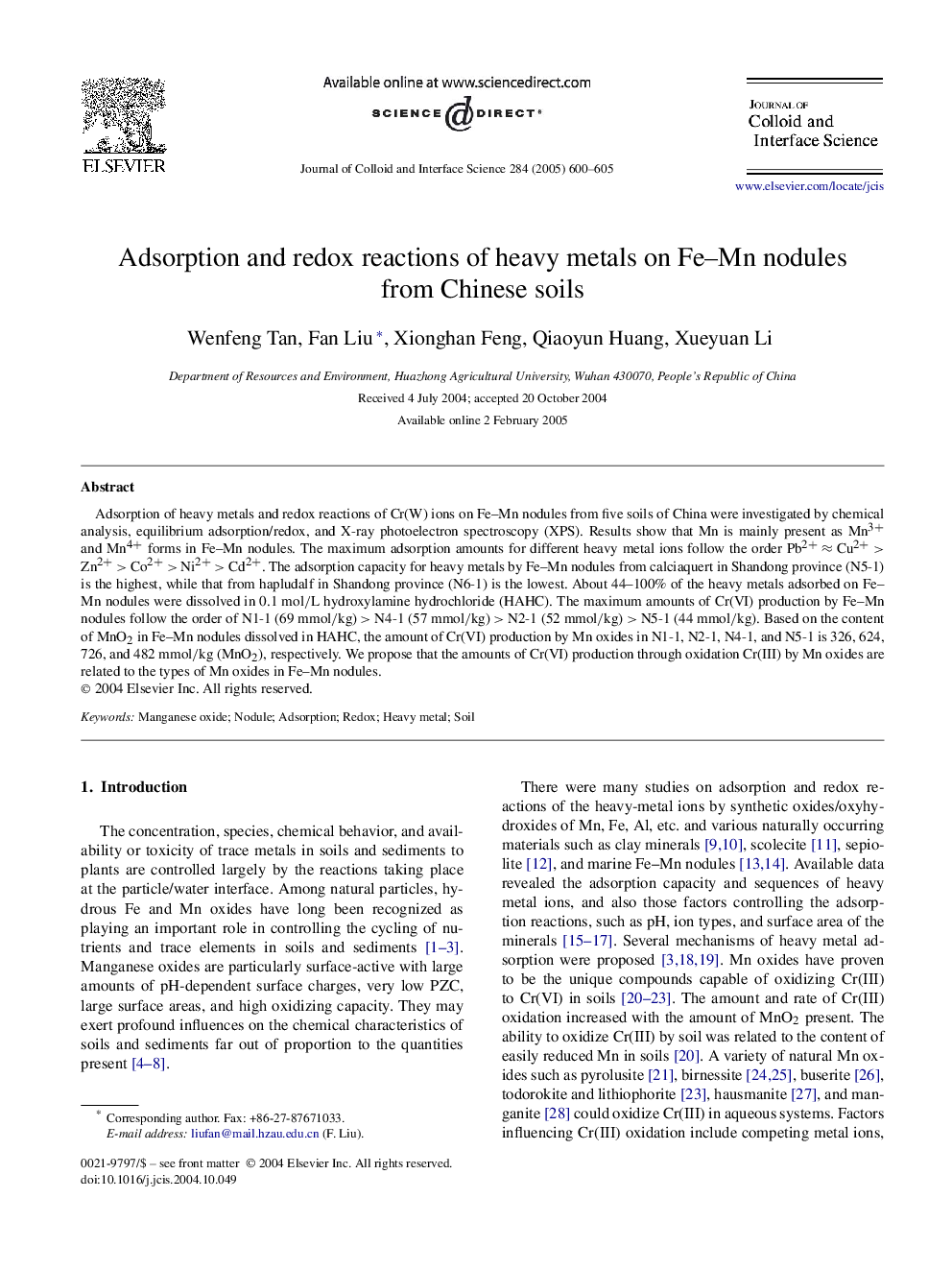| Article ID | Journal | Published Year | Pages | File Type |
|---|---|---|---|---|
| 10378241 | Journal of Colloid and Interface Science | 2005 | 6 Pages |
Abstract
Adsorption of heavy metals and redox reactions of Cr(W) ions on Fe-Mn nodules from five soils of China were investigated by chemical analysis, equilibrium adsorption/redox, and X-ray photoelectron spectroscopy (XPS). Results show that Mn is mainly present as Mn3+ and Mn4+ forms in Fe-Mn nodules. The maximum adsorption amounts for different heavy metal ions follow the order Pb2+ â Cu2+ > Zn2+ > Co2+ > Ni2+ > Cd2+. The adsorption capacity for heavy metals by Fe-Mn nodules from calciaquert in Shandong province (N5-1) is the highest, while that from hapludalf in Shandong province (N6-1) is the lowest. About 44-100% of the heavy metals adsorbed on Fe-Mn nodules were dissolved in 0.1 mol/L hydroxylamine hydrochloride (HAHC). The maximum amounts of Cr(VI) production by Fe-Mn nodules follow the order of N1-1 (69 mmol/kg) > N4-1 (57 mmol/kg) > N2-1 (52 mmol/kg) > N5-1 (44 mmol/kg). Based on the content of MnO2 in Fe-Mn nodules dissolved in HAHC, the amount of Cr(VI) production by Mn oxides in N1-1, N2-1, N4-1, and N5-1 is 326, 624, 726, and 482 mmol/kg (MnO2), respectively. We propose that the amounts of Cr(VI) production through oxidation Cr(III) by Mn oxides are related to the types of Mn oxides in Fe-Mn nodules.
Related Topics
Physical Sciences and Engineering
Chemical Engineering
Colloid and Surface Chemistry
Authors
Wenfeng Tan, Fan Liu, Xionghan Feng, Qiaoyun Huang, Xueyuan Li,
